Where Are They Now?
We track down several celebrities who retired from local TV
Wayne Mahar
Pickleball, a Winnebago and forecasting in retirement
By Ken Sturtz
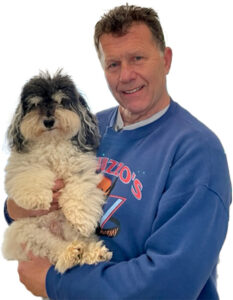 Wayne Mahar doesn’t really know the meaning of retirement.
Wayne Mahar doesn’t really know the meaning of retirement.
“I’ve always said semi-retired,” he said. “I don’t golf. I’m a type A personality. I’ve worked hard all of my life and I’m not going to just sit around and do nothing.”
It helps of course that the 67-year-old former chief meteorologist for CNYCentral (NBC, CBS, CW), who retired from that job in December 2021, loves what he does and already had an established weather forecasting business.
“The problem never was I’m going to retire or semi-retire because I’m tired of doing it,” Mahar said. “You’ve got some people who don’t like what they’ve done for work over their lives, but you’ve got to work because you’ve got to pay bills. That’s not me.”
Mahar routinely worked a grueling 80 to 90 hours a week since he was a teenager. During 37 years in Syracuse he typically spent from 1:30 p.m. until after midnight at the TV station before heading home to catch four or five hours of sleep. Then he’d wake up in the morning to do forecasting for his private weather clients.
Still, Mahar was looking to slow down a bit.
He wanted to spend more time with family and he and his wife wanted to travel. And about five years before he retired his adult children had moved to Charlotte, North Carolina. He said he and his wife wanted to be close to their kids and grandchildren.
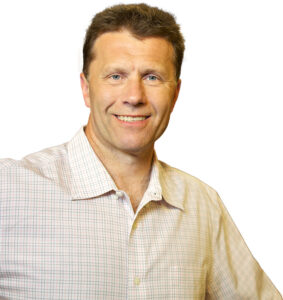 “And we had no family in Central New York and as much as I have always loved it and still do and have good friends in Central New York, we’ve got to be near the kids,” he said.
“And we had no family in Central New York and as much as I have always loved it and still do and have good friends in Central New York, we’ve got to be near the kids,” he said.
So, he and his wife started looking for a house near their children and eventually found a 100-year-old farmhouse they liked in York, South Carolina, just across the border from Charlotte. They spent four years having it refurbished and moved in after Mahar retired in 2021.
He’s still busy, though he’s dialed back work to a more manageable 30 to 35 hours a week.
He started his forecasting business, Precision Weather Service, even before he got into TV full time in 1977 in Portland, Maine. He works from a home office — his weather command center — that includes computers, monitors and a microphone. He once had about 250 clients, but sold half of his client list years ago and now operates with five or six people who work for him.
Mahar’s company provides forecasting services for roughly 35 radio stations across North America from Montana to the Virgin Islands. Central New Yorkers can hear him every morning on TK99 and KROCK.
The company also provides forecasting for clients — many in Central New York — ranging from highway departments, schools and airports, to professional sports leagues, utilities and concert and festival organizers. Mahar also handles forecasts for about 200 events annually, including weddings and movie shoots and premiers. For example, he did the forecasting when “Top Gun: Maverick” premiered on a ship off of San Diego, when Jennifer Lopez and Ben Affleck wed in Georgia and when Will Smith bungee-jumped into the Grand Canyon for his 50th birthday.
Mahar is also still forecasting on TV, just not in Central New York. He said he knew he wanted to keep one foot in TV so when he moved he contacted the TV stations in Charlotte and became a freelance meteorologist for WSCO-TV. He fills in on-air four or five times a month when it suits his schedule, something he said is a nice change.
“And that’s the flexibility you don’t have when you have a full-time TV job,” he said.
Mahar and his wife have been able to do more traveling like they wanted. They bought a 21-foot Winnebago Travato in early 2023.
“It’s a little crowded, but it’s cozy and we love it,” he said.
Mahar said he and his wife and their four dogs have taken about one three- to six-day trip a month. And while it’s snug, the smaller RV has allowed them to visit places they couldn’t go with a bigger vehicle, such as the Great Smoky Mountains. They plan to start taking longer trips of two to three weeks this year.
Although Mahar is living in South Carolina now, he still raises money for the Priscilla Mahar Animal Welfare Foundation, which he founded on behalf of his mother after she died in 2007. The foundation has donated nearly $400,000 to New York animal rescues.
Even a workaholic like Mahar admits that getting used to retirement was a bit of “a learning curve.” After he retired from CNYCentral, but before he started freelancing with WSCO-TV, he missed the social environment of a TV station. He had his weather forecasting business, but that was done mostly over the phone. The COVID-19 pandemic didn’t help either, he said.
So, Mahar started hitting the gym three or four days a week and met a great group of people, and took up pickleball. Now he sees friends several times a week for pickleball, too. He said he still talks to forecasters and radio clients every day and is still on TV enough that he gets to be around the newsroom atmosphere he enjoys.
And he still gets recognized occasionally even though it’s far less than before he retired. It’s usually viewers who watch him on TV in Charlotte, but Mahar said he’s gratified when former viewers from Central New York stop him and say hello.
“I went to pick up take-out at a restaurant and people sitting next to the door were from Oswego and noticed me,” he said.
Jackie Robinson
Philanthropist, mentor and caregiver
By Ken Sturtz
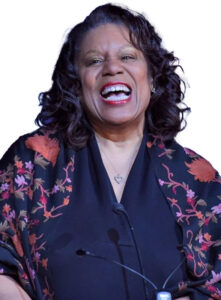 Ask Jackie Robinson to sum up her life in retirement since she stepped away from the anchor desk at WSTM-TV in 2012 and she uses two words: community service.
Ask Jackie Robinson to sum up her life in retirement since she stepped away from the anchor desk at WSTM-TV in 2012 and she uses two words: community service.
“I’m using my gifts for good,” she said. “Trying to give back to the community that gave so much to me.”
Robinson grew up in North Syracuse. Her parents stressed the importance of education, but she was one of five children, so she began looking for scholarship opportunities in high school.
In the 1970s there weren’t any minorities on television in Syracuse. Several local groups challenged the broadcast licenses of the TV stations, arguing that TV was supposed to be reflective of the community. In response, a scholarship was eventually created to allow a minority student to study communications at Syracuse University.
Robinson beat out several hundred applicants and won the scholarship. She said she was keenly aware that she would be an example to those who followed her.
“So, I knew when I won this full scholarship that I had to be twice as good,” she said.
Robinson began her 35-year career at WSTM-TV, at the time known as WSYR, when she landed a summer job as a newsroom secretary. She said at the end of summer she knew she wanted to pursue a career in news. After graduating from SU she received a job offer as a general assignment reporter. She became the weekend anchor in 1985, the station’s first Black anchor. And in 1990 she was promoted to anchor the main 6 p.m. and 11 p.m. shows.
Robinson said she loved her job and all of the wonderful stories she was fortunate enough to tell, but that when the time came to retire she was ready for the change. She said she’s about as busy in retirement as she was when she was working.
“You know it’s a different kind of busy, but I think I was ready for that transition,” she said. “I’m grateful and it was a wonderful opportunity, but I’m really enjoying retirement.”
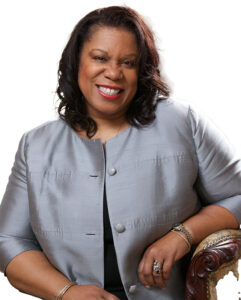 Now she spends a lot of her time volunteering with Central Baptist Church in Syracuse. The church puts on an annual golf outing and auction that funds most of its charitable work helping families throughout the year such as Thanksgiving baskets, backpacks and school supplies and a trunk or treat event at Halloween.
Now she spends a lot of her time volunteering with Central Baptist Church in Syracuse. The church puts on an annual golf outing and auction that funds most of its charitable work helping families throughout the year such as Thanksgiving baskets, backpacks and school supplies and a trunk or treat event at Halloween.
Robinson and her husband, Henry, organize the event and she said it’s close to a full-time job.
She spends a lot of time making phone calls to recruit golfers and sponsors and getting businesses to donate silent auction items. Sometimes people will ask if they can drop something off at her office at the church.
“And I’m thinking ‘I don’t have an office at the church. I’m just a volunteer,’” Robinson said, laughing.
Robinson has also remained very involved with her sorority, the Syracuse University chapter of Delta Sigma Theta, since becoming a member in 1980. The organization includes hundreds of thousands of predominantly Black college-educated women in chapters around the world.
Robinson volunteers with the sorority throughout the year for things like clothing distributions on Martin Luther King Jr. Day, registering people to vote and working with children in the local schools.
Besides her work in the community, Robinson also cared for a family member after retiring.
She said her mother had died and her father developed an aneurism. The family decided he shouldn’t live alone, so he came to live with Robinson and her husband. She helped her father with things like taking him to doctor’s appointments and kidney dialysis three times a week and picking up prescriptions.
“So, I was a caregiver up until 2020 when he passed at the age of 87,” she said.
As busy as she is, Robinson also makes time to mentor many of her former interns and colleagues, some of whom have gone on to careers with national news outlets. She said she enjoys keeping in touch with as many of her former interns and colleagues as much as possible and offering career advice.
“Different students and journalists will call and if I can help in any way I do,” Robinson said. “It’s more than worth it. I’m hoping I’m using my gifts for good.”
Retirement has given Robinson more time to spend with her family and to travel. She said her husband, who was a partner at Bond Schenck and King, retired a couple of years after her and it’s much easier to plan get-togethers with just their adult children working. She and her husband have traveled a bit in retirement and enjoyed going on several cruises.
“It’s been wonderful to be able to have that freedom,” she said.
And Robinson and her husband plan to remain in Central New York, though they’ll probably be moving from their house in Manlius in the future. With just the two of them, their five-bedroom house with a four-car garage is more than they need.
“We need to downsize and find something for us,” she said. “Kids still visit, but we don’t need all that space.”
As much as she enjoys retirement and having more time for family and community service, some habits die hard for a former TV news anchor. After working 3 p.m. to midnight for so long, Robinson still finds herself to be a night owl. It’s not unusual for her to be up at 2 a.m. taking care of chores around the house.
“When we have to be doing community things and they need you there by 8 a.m.,” she said. “And I’m thinking ‘Oh my goodness I’m still a night person.’”
Dan Cummings
Health scare and a second lease on life
By Ken Sturtz
 When Dan Cummings retired from News Channel 9 in December 2021, capping a 45-year career in broadcasting, he started hopping on a treadmill every day.
When Dan Cummings retired from News Channel 9 in December 2021, capping a 45-year career in broadcasting, he started hopping on a treadmill every day.
The news anchor was by no means a couch potato, having completed five marathons and plenty of road races over the years. But he noticed he grew tired after 20 minutes on the treadmill even at a modest pace and simply assumed he had gotten a bit out of shape and needed to do something about it.
He eventually went to see his doctor, who sent him for a stress test, which he failed. Cummings, who was 65 at the time, was stunned when doctors at Crouse Hospital discovered he had a 95% blockage in the main artery to his heart.
“I had no idea,” he said. “I had always had no problems with heart or blood pressure, cholesterol was always good.”
Doctors cleared the blockage and inserted several stents in March 2022 and Cummings made a quick recovery. He is back to golfing, still runs several mornings a week at the YMCA and even has several long-distance running events scheduled. He said he’s grateful for the “second lease on life in retirement” that he received.
Cummings, who lives with his wife, Danielle, in Syracuse, has two adult children. He said he had been looking forward to retiring before he knew about his heart issue.
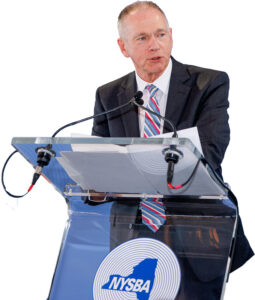 He came to Syracuse in 1978 because famed newsman Bill Carey offered him a job at radio station 62 WHEN. He worked there until 1981 when he went to Cornell University to earn a master’s degree. He worked in radio in Ithaca while he was in school and later returned to WHEN. He was hired by Channel 9 in 1984.
He came to Syracuse in 1978 because famed newsman Bill Carey offered him a job at radio station 62 WHEN. He worked there until 1981 when he went to Cornell University to earn a master’s degree. He worked in radio in Ithaca while he was in school and later returned to WHEN. He was hired by Channel 9 in 1984.
“I spent 17 of the longest months of my life as assignment editor,” he said. “That’s a tough job, but it’s a great entry level position for television.”
Though he had stints as assistant news director and news director, Cummings moved into reporting and anchoring and ended up appearing on just about every major broadcast at the station. He anchored the 5 p.m. news and reported for the 5:30 p.m. and 6 p.m. shows. Later on, he anchored the 11 p.m. news. He spent the last 14 years of his career hosting the morning news, which he loved.
Cummings said some of his favorite projects involved longer-form storytelling, such as documentaries he worked on about the canonization of St. Marianne Cope and two Honor Flight Syracuse missions. Cummings said he was so impressed by the veterans’ stories that the station began to produce a special Veteran’s Voice documentary each fall.
As much as Cummings loved his job, he said he wanted to retire partially because he had to be up at 2:30 a.m. daily for the morning news and because he wanted time to do other things.
“You get that feeling that I’ve done what I’ve done for long enough,” he said. “It just felt right. The timing was right for me personally.”
Honor Flight Syracuse was so impressed with his work that after Cummings retired the volunteer organization approached him and asked him to join its board and handle its marketing and communications.
“That has soaked up a lot of my time and I love it,” he said.
Cummings also hosts a monthly radio program on WCNY’s Community FM called CNY Heroes. The program deals with veterans and veterans affairs.
In addition to his work with veterans, Cummings also sits on the board of HOPE for Bereaved, which provides support services for anyone grieving the loss of a loved one.
And during his first year and a half of retirement, Cummings worked with an initiative called Project Compassion to help launch a new website (compassionandcope.org) that provides information and resources to support the physical, emotional and spiritual needs of seriously ill patients and their families. Cummings helped produce a series of videos for the website.
“I’m busier than I thought I would be, but I’m involved in things I love to do and that’s the rewarding part,” he said.
As active in the community as he has remained in retirement if you try to look Cummings up on social media you won’t find much of anything, in contrast to some retired TV anchors and meteorologists who maintain a robust social media presence after stepping off air. That’s because he resisted adopting social media.
“I didn’t even have a Facebook account until I joined Honor Flight because as communications director I had to have one,” he said. “I managed to totally keep my distance from social media platforms because I just wasn’t comfortable with the technology.”
After prodding from his colleagues, Cummings once signed up for Twitter years ago during a break in the morning news. Twenty minutes later his feed was blowing up and he said he was overwhelmed, so he never embraced social media.
“I don’t mean to be a curmudgeon or an iconoclast,” he said. “I use the web, but the social media platforms simply overwhelm me with the volume of stuff that’s on there.”
But that doesn’t mean Cummings is nowhere to be found. Last fall, for example, he was inducted into the New York State Broadcasters Hall of Fame. He said the experience was incredibly humbling and still feels surreal.
And even more than two years after retiring he still gets stopped on the street every day by viewers who tell him how much they miss him. He said it’s partially because local TV viewers, especially those who watch morning shows, tend to be intensely loyal.
“It’s really gratifying to hear from people who made me part of their life for so many years,” he said. “They invite you into their homes every morning and you become part of their family.”
Tammy Palmer
Time was right to move on after more than two decades on the air
By Stefan Yablonski
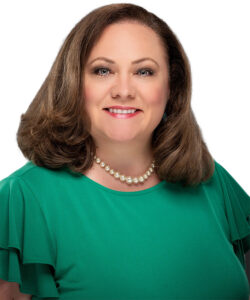 Tammy Palmer is from Oswego County, born and raised.
Tammy Palmer is from Oswego County, born and raised.
She earned a degree in communications studies from SUNY Oswego. The former TV news anchor is now the public information officer for OCRRA, the Onondaga County Resource Recovery Agency.
OCRRA is a nonprofit public benefit corporation, created by the New York State Legislature to deliver a solid waste management and resource recovery system for Onondaga County. In other words — the agency makes sure there’s a system in place to handle all the trash and recycling that municipalities and residents collect and drop off, she said.
OCRRA also oversees two compost sites where food and yard waste is transformed into mulch and compost.
“I was that kid who enjoyed watching the news. As I entered my senior year of high school, I took a broadcast journalism class that had recently been created by Len Senecal. We’d make school announcements in the morning and produce a weekly newscast for a local radio station. I would proudly carry around my recorder to capture soundbites about the French Club elections or policy changes,” she recalled. “I recall interviewing a school board member about a ‘big controversy’ at the time. They were deciding if students would be allowed to leave school grounds during their lunch break. It was empowering. I was thinking about decisions that affected my life, learning who had the power to make those decisions and asking them to explain themselves. It felt like meaningful work.”
She had major surgery in 2016 due to ulcerative colitis.
“I began to think about the challenges of growing older in a career that demanded long hours, often outdoors and on the road. I was also teaching college courses,” she said.
As a reporter, she was “working from the moment I woke up in the morning until I went to bed at night. I found relief as a news anchor, where I could stay inside — a more manageable situation for me post-surgery. But company consolidations sent my evening news anchor position to Albany during the COVID-19 pandemic.”
It made sense to make a career adjustment at that point and use her skills outside of a newsroom, she explained. She’d been a journalist for more than 20 years. Newsrooms were changing rapidly.
“I’m still rooting for the people who are working through those changes,” she said. “In news, I felt like I was helping my neighbors in Central New York become aware of issues or solve challenges. I knew I wanted another meaningful job that addresses public needs.”
Since part of her role is media relations, people can still see or hear her on the air every once in a while, sharing recycling tips or details about the OCRRA Earth Day Litter Cleanup event in Onondaga County.
“Fortunately, the part of a communications job that is most uncomfortable for many others [being on television] is the most familiar part of the job for me,” she said. “It’s funny; I think I’d be a better journalist after stepping away from the work for a while and seeing how systems work from another perspective. Isn’t that how life works though?”
The career switch allowed her to embrace a few things she loves, but rarely got to enjoy as a journalist.
“I foster kittens, which makes me ridiculously giddy in a way that only people who appreciate cats will understand. I also enjoy holidays and weekends with my family and friends now. I can take vacations any time of the year — even if it is during election season, a ratings period, the New York State Fair or some other big local event.”
Her advice for those looking to enter the field?
“Be open to criticism. The trick is being able to put aside defensiveness, explore the feedback and acknowledge when it is valid. That’s not easy,” she said. “At the same time, don’t hold onto silly comments that could drag you down. If your primary motivation is to make everyone like you — you’re missing the point.”
Choose and deliver your words carefully, she added.
“Are you stressing certain words or phrases with your tone? Does that reflect your opinion or a bit of sensationalism? Inflammatory words can create an unhealthy controversy where none existed before. Stick to the facts,” she said.
Dave Longley
Still active on the job, works behind the scenes at Channel 9
By Stefan Yablonski
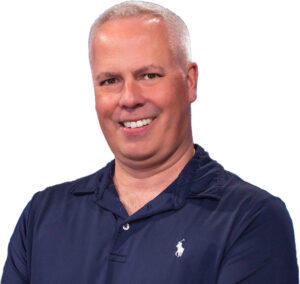 Dave Longley has transitioned from chief meteorologist at NewsChannel 9 to the station’s digital content manager.
Dave Longley has transitioned from chief meteorologist at NewsChannel 9 to the station’s digital content manager.
He made the switch to a behind the scenes position in 2017, after being diagnosed with multiple sclerosis a few years earlier.
He has been at the station going on 32 years.
“My degree at SUNY Oswego is in meteorology. I really didn’t take any journalism courses,” he said. “Everything I learned was basically on the job — when I began interning with [former Channel 9 meteorologist] Dave Eichorn in the spring of 1992.”
These days, Eichorn spends most of his time in his wood workshop — “but to the core we’re all weather hobbyists. So we do find time for that, too,” Longley said. “I’m still a meteorologist at heart. I look at maps and keep up to date with what’s going on in the world of weather.”
He was actually hired about two years before he graduated. His anniversary date is May 1992.
Basically a digital content manager, he handles all of the digital properties of NewsChannel 9, he explained.
“That means the website, news and weather apps, social media channels. I oversee the content that goes beyond our broadcast channel,” he said.
Day-to-day activities range from writing web stories, building web pages and reviewing analytics on all of the station’s platforms to gain the highest audience possible — “How are people engaging with our content and how are we delivering that content to our users,” he added.
He learned how to tell a weather story and began practicing in front of the camera and honed his presentation throughout 1992 and into 1993.
“Finally, in the summer of 1993, I became an on-air meteorologist for WIXT. Keep in mind I was just entering my senior year at SUNY Oswego,” he said.
He did weekend and fill-in work for the next year and a half. He graduated from Oswego in May 1994 and moved to the morning show in October 1994.
“I did mornings for 14 years, until 2009,” he said. “In 2009, I became chief meteorologist and continued in that role through 2016.”
In 2005, he was diagnosed with multiple sclerosis and finally he switched to a behind-the-scenes role — assistant news director position — in January 2017. Then he became the digital content manager for NewsChannel 9 in January 2022 where he is presently employed.
“I am fortunate that WSYR has adapted with me as my disease progressed,” he said. “There are many experiences and stories that I have accumulated throughout my career, but the one thing I hold dear is the willingness of people at the station to teach and train someone who was willing to learn.”
MS
MS affects everyone differently. People should talk to their doctor to work out the best plan of action if they have the illness.
Basically, the immune system of a person with MS begins attacking itself. The protective myelin covering of the nerves in the brain or spinal cord is removed — the nerves short circuit.
There is no cure for multiple sclerosis. The goal of the different drug therapies is to slow the progression of the disease. Some drugs work for some people and not for others.
One of the symptoms is tremors. Balance, walking and coordination also decline
There is some promising news in terms of research that is being done and new drug therapies that are becoming available to patients. Researchers are also developing animal models of MS to more accurately predict drug response in human disease. However, current animal models share some of the disease mechanisms and symptoms of MS but do not fully mimic the disease, especially in its clinically progressive phase.
UVA Health neuroscientists have discovered a potential way to disrupt the chronic inflammation responsible for multiple sclerosis.
UVA’s new study identifies a vital contributor to the hyperactive autoimmune response and neuroinflammation that are the hallmarks of MS. Blocking this lynchpin in a research model of MS alleviated the harmful inflammation, giving researchers a prime target in their efforts to develop new treatments for multiple sclerosis and other autoimmune diseases.
Keith Kobland
Former TV anchor and reporter enjoys the best of both words. ‘I truly feel blessed’
By Stefan Yablonski
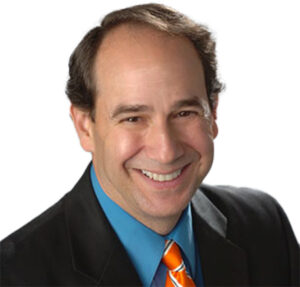 Keith Kobland started out at a small station, but has wound up ‘right where he belongs.”
Keith Kobland started out at a small station, but has wound up ‘right where he belongs.”
It all started at a small 10-watt daytimer in Corning, he said.
“Seriously, Corning, New York, and WCBA is where I started my full-time news broadcasting career after studying broadcast journalism at SUNY Geneseo.” He said. “I was 100% unprepared and lasted a month before returning to Syracuse and finding part-time gigs at WRVO in Oswego, WMBO in Auburn and eventually WSYR radio in Syracuse.”
He was hired full-time by WSYR in 1985 and worked alongside Jim Reith, Ellen Abbott, Howard Modell and the late Dave White.
It was a hard-driving newsroom in a competitive news market with active radio, TV and newspaper newsrooms fully staffed 24/7, he recalled.
He said he never set out to be a TV journalist — but developed deep friendships “with local TV news folk who urged me to make the switch.”
“I joined TV5 in 1990 when it was Ron Curtis and Maureen Green anchoring our primary newscasts,” he said.
Kobland started by working weekends and eventually wound up co-anchoring the nightly 11 p.m. newscasts with Tracy Davidson, Kathy Orr and Mike Tirico.
“I had a blast working with talented people both on the air and behind the scenes,” he said. “I was proud driving into the station along James Street, which was still bustling with businesses and apartments.”
His best moments were spent during “our quiet times” — during the evening news shifts when the show was ready for air and they had a few moments to relax, grab a bite to eat and even play the dictionary game.
One of his most memorable experiences story-wise was going for a ride along with the Blue Angels in an F-18 jet. An experience he describes simply as “Amazing.”
But that was the enjoyable part of the job.
“There were many more memorable moments for the wrong reasons, due to stories of death or devastation,” he added. “These types of stories make up any given nightly newscast and I had my share of covering fatal auto accidents or fires.
“I was on hand and reported from the Adirondacks during the search for Sarah Wood. I was also on hand when Woodstock burned in Rome, New York. Thanks to the magic of videotape and YouTube, both moments are online for the world to see.”
When Channel 3 absorbed the TV 5 newsroom, he went to work for WSYR-TV and was there for “three great years, again working with consummate broadcast professionals,” he said.
Through his industry contacts, he learned of the media relations position at Syracuse University, along with teaching opportunities at the Newhouse School.
“I gratefully accepted a position there in 2012 and have worked there ever since,” he said. “In many ways my 25-plus years in broadcasting aligns perfectly with my current role at SU. I work closely with many of the media members I grew up with, along with national news media I worked with closely through my TV career.”
One of them is the great Scott MacFarlane from CBS News, who was Kobland’s first overnight news producer at TV5 when he started anchoring the morning show.
Teaching young broadcast journalists is simply “the icing on the cake” for him.
“I never considered where a career in TV news would take me. But, I feel I wound up exactly where I belong, with one foot still squarely involved in media, with the other helping and mentoring young people getting into the field,” he said. ”I truly feel blessed.”

